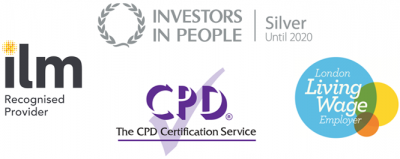Oct
27
2016
How to manage stress and improve focus
It’s official: we’re more stressed in the workplace than we were forty years ago. The UK Office for National Statistics’ Labour Force Survey states that 442,000 employees in Britain reported feeling work-related stress at a level that was making them physically ill (HSE 2007/8). It’s not a surprising statistic considering the crowded commutes before you even reach the office, challenging colleagues, increasing workloads and poor leadership all contributing to the phenomena.
The cost doesn’t end at personal wellbeing; the Chartered Institute of Personnel and Development (2011) estimates that UK businesses lose £1,800 per employee per year as a result of stress-related absenteeism.
So what is mindfulness and how can it help you to manage your stress levels?
The recent explosion of mindfulness-based practices was introduced to the West by Dr Jon Kabat-Zinn. His research into pain management paved the way for the growth of mindfulness that we’ve seen over recent years. Kabat-Zinn describes the practice of mindfulness as “paying attention in a particular way; on purpose, in the present moment and non-judgementally”. Put simply, mindfulness is awareness: it’s knowing what you are doing whilst you are doing it. It’s the opposite to mindlessness, those moments at work (and home) when we switch over onto autopilot and:
- miss what a colleague has just said to us (whilst still nodding our head)
- drift off in meetings
- fail to recall the commute to or from work
- get caught up in negative cycles of thought or rumination about our workload, colleague or current project
- operate under the erroneous assumption that working more hours and taking fewer breaks will somehow make us more productive (we know from research that it won’t)
- ignore symptoms of stress such as tiredness, lack of focus and loss of enthusiasm, ploughing on regardless without examination.
Mindfulness is being aware of those moments. Noticing. Recognising what we are feeling as we’re feeling it.
Mindfulness in the workplace
Alongside the rise in work-related stress, research from the University of California found that we’re distracted on average every three minutes at work. The Wall Street Journal reports that we check our emails on average a whopping 74 times daily. There’s no wonder we’re feeling stressed at work!
It’s easy to see why the corporate world is embracing mindfulness as a strategy to reduce stress and enhance performance. With Google leading the field, SAP, Aetna, Virgin, Transport for London, UK Parliament and US Congress are all incorporating mindfulness programmes into their business strategies. Mindfulness is becoming mainstream, with the provision of workplace mindfulness courses to lower stress, increase wellbeing, improve focus, enhance productivity and boost creativity.
Take five
Whatever your role in the company, here are five simple mindfulness exercises that you can incorporate into your daily routine:
1. Take a mindful breath
Just take one, deep, mindful breath. Noticing as you inhale deeply, feeling the air enter your nostrils and fill your lungs. Become aware of the pause between the in breath and out breath. Exhale slowly, again noticing the physical sensations within your body. Yes, even one breath will make a difference and start to train your attention and your brain.
2. A mindful minute
After you’ve cut your teeth on one deep breath you can work up to a whole mindful minute of breathing. This time, don’t change your breathing, just notice the breath as you inhale and exhale. Perhaps you’ll notice that the air is slightly cooler around the nostrils as you inhale, or slightly warmer on the exhalation. You might sense the breath on the upper lip – just go with it and see what happens. If your mind wanders, recognise that you are distracted and gently bring your focus back to your breathing.
3. Mindful listening
The next time you’re in a meeting, practice mindful listening. As well as the content of what is being said watch the facial expressions, posture and gestures of colleagues. Notice how mindfully listening changes the quality of your interaction with those round you.
4. Switch from ‘Doing’ to ‘Being’
Take two minutes to sit and notice how you feel with no agenda, no objective or goal. With this exercise there is nowhere to go and nothing to do except experience ‘being’.
5. Mindful walking
An easy way to incorporate mindfulness is to practice mindful walking. Notice how your feet feel against the ground as you walk, the balance shifting from one foot to the other. Feel the breeze on your face and the sun on your skin. As you walk along, look at the light on the trees and the different buildings around you, observing the different styles of architecture. This is a great way to build mindfulness into your daily routine to and from work or on your way to a meeting.


